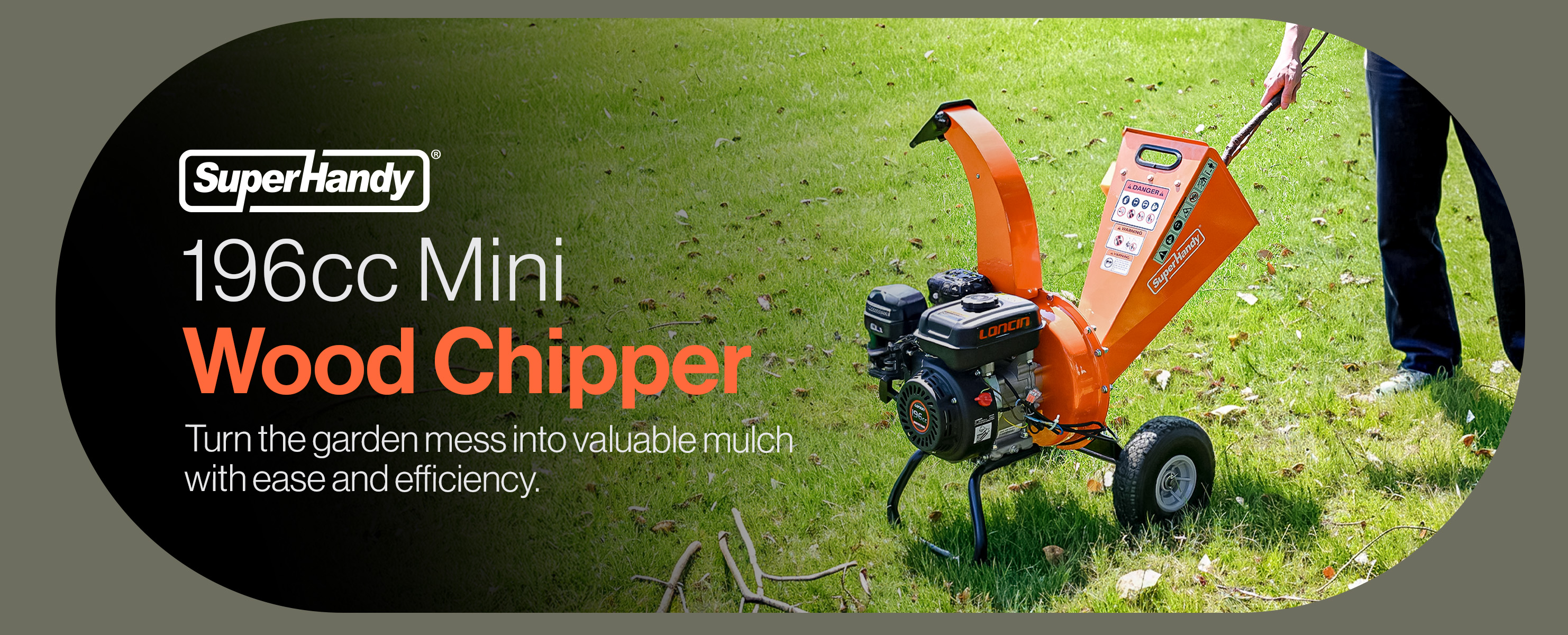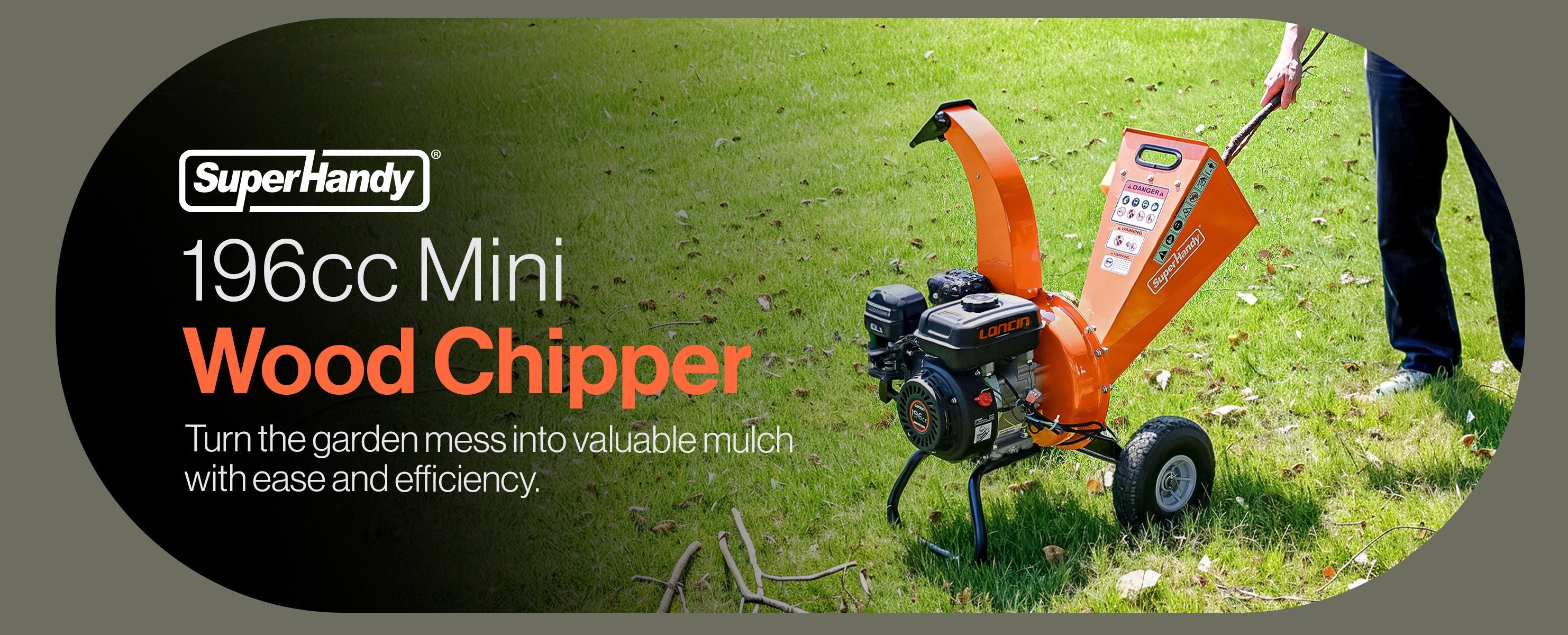You make sure your gas wood chipper works well by looking after it and using the correct fuel. These habits help you spend less and stop problems from happening.
Always switch off your machine and let it cool down before you do any maintenance. Safety is the most important thing when you look after your equipment.
Key Takeaways
-
Always put safety first. Turn off the chipper before you start. Let it cool down before you do any work. Wear protective gear so you do not get hurt.
-
Clean your gas wood chipper after every use. This stops debris from building up. Check for loose parts and damage. This helps the chipper work well.
-
Use fresh, unleaded petrol with an octane rating of 87 or more. Do not use petrol with a lot of ethanol. This keeps your engine safe from harm.
Gas Wood Chipper Maintenance
Safety Precautions
You must always put safety first when you look after your gas wood chipper. Turn off the machine and let it cool before you start any maintenance. Wear gloves and safety glasses to protect yourself from sharp blades and moving parts. Keep the area clear of children and pets.
Tip: Never rush. Take your time to avoid accidents.
Follow these important safety guidelines:
-
Check the tyre pressure every 25 hours of use.
-
Clean the engine exterior and cooling system every 25 hours.
-
Change engine oil every 25 hours.
-
Replace the air filter every 25 hours.
-
Replace the spark plug every 100 hours.
Cleaning and Inspection
Clean your gas wood chipper after each use. Remove wood chips, leaves, and dust from the hopper and discharge chute. Use a brush or compressed air for hard-to-reach spots. Inspect the machine for loose bolts, worn belts, and damaged guards.
You should check the general equipment condition before every session. Look for leaks, cracks, or rust.
Note: Regular cleaning stops debris from building up and keeps your chipper running smoothly.
Engine Maintenance
Engine care keeps your gas wood chipper reliable. You need to check the oil level before each use. Change the oil as recommended in the manual. Most manufacturers suggest changing the engine oil every 200-250 hours of operation.
Replace the air filter every 25 hours to keep dust out of the engine. Swap the spark plug every 100 hours for easy starting.
Frequent fuel changes help prevent engine blockages and keep the chipper working well. Fresh fuel reduces maintenance costs and downtime.
Tip: Always use clean, fresh petrol to avoid problems.
Blade Care
Sharp blades make your gas wood chipper work better. Check the blades often for nicks or dull edges. Sharpen them if you notice poor cutting or rough chips. Replace blades that show signs of bending or heavy wear.
Tip: Use a file or sharpening stone for minor blade touch-ups. For major damage, fit new blades.
Lubrication and Parts Replacement
Lubrication stops moving parts from wearing out. You need to check the oil level in the engine and grease fittings on the chipper.
Here is a table showing which parts need lubrication and how often:
Replace worn belts, bearings, and guards as soon as you spot damage.
Frequent fuel changes and regular lubrication help prolong the life of your gas wood chipper. These steps keep breakdowns away and make your machine last longer.
Note: Always use the right grease and oil for your chipper. Check your manual for details.
Fuelling and Storage Tips

Fuelling Procedures
You need to use the right fuel for your gas wood chipper. Choose unleaded petrol with a minimum octane rating of 87. Avoid petrol with more than 10% ethanol, as this type can break down faster and cause problems. Always check the fuel tank before each use. Make sure the cap is tight and clean.
Using old or dirty fuel can harm your engine. Dirt in the fuel may block the carburettor and reduce performance. Water in the tank can make these issues worse.
When changing your wood chipper fuel, pour slowly to prevent spills. Wipe up any drips straight away. Store fuel in a safe container away from sunlight and heat. Never use fuel that smells stale or looks cloudy.
Fuel Stabiliser Use
You can keep your fuel fresh by adding a fuel stabiliser. This simple step helps with preventing fuel degradation. Fuel stabiliser stops gum and varnish from forming inside the engine. It keeps fuel usable for up to 12 months.
Fuel stabiliser is a cost-effective way to protect your engine and avoid breakdowns.
Add stabiliser to the fuel tank if you plan to store your gas wood chipper for more than a month. Mix it well by gently rocking the machine.
Safe Storage Practices
You should store your gas wood chipper in a dry, shaded place. Keep it away from rain and direct sunlight. Always empty the fuel tank if you will not use the chipper for a long time. For short-term storage, check the fuel level and top up if needed.
Store fuel in approved containers with tight lids. Place them in a cool, ventilated area.
Regular checks help you spot leaks or rust early. Clean the chipper before storing it. Cover the machine to keep dust and moisture away.
You can trust your gas wood chipper if you clean it often. Check it for problems and use the right fuel. Doing these things stops it from breaking down. It also keeps you safe.
-
Never leave the machine alone when it is working.
-
Be careful when you put branches into the chipper.
Begin looking after your chipper now. This will help it work well and safely for many years.
FAQ
How often should you sharpen the blades on your gas wood chipper?
You should check the blades after every use. Sharpen them when you see dull edges or notice rough wood chips.
What type of fuel works best for your gas wood chipper?
Use fresh, unleaded petrol with an octane rating of 87 or higher. Avoid petrol with more than 10% ethanol.
Can you leave fuel in the chipper during winter storage?
It is best to empty the fuel tank before long-term storage. Add fuel stabiliser if you must leave fuel in the tank.

